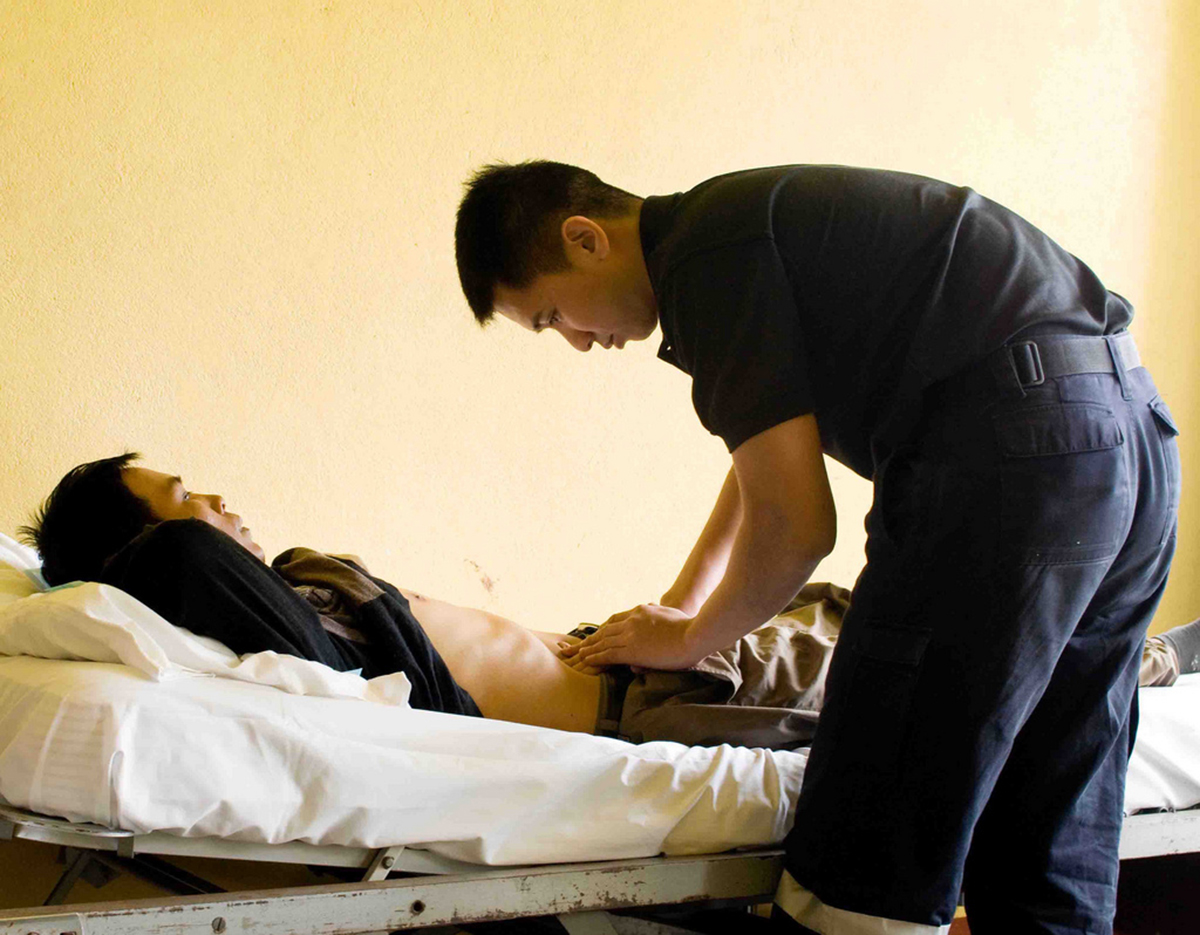Doctors can often do a great job diagnosing mysterious symptoms. Before they can use their professional judgment, however, one thing has to happen. The patient has to come in. Often patients have difficulty making decisions on whether or not to see a doctor for abdominal pain.

Before we get too far into this discussion, please remember a general principle:
It is far better to be seen by a doctor for symptoms that turn out not to be serious than it is not to be seen by a doctor in the early stages of a life-threatening condition.
With these general guidelines, however, you can determine when you need to make a trip to the emergency room, when you need to make an appointment to see the doctor soon, and when abdominal discomfort is likely to pass on its own.
Where Does It Hurt?
- Upper middle section. This is where you have most of the stomach, part of the small intestine, and the pancreas. Your doctor will rule in or rule out problems with all of these organs if you have pain here.
- Lower right quadrant. This section contains the last of the small intestine. In women, it's where there can be pain from the right ovary or from the appendix.
- Lower left quadrant. This section of the abdomen is where women feel pain from the left ovary.
- Upper right quadrant. This part of the abdomen houses the liver, the bile duct, the gall bladder, and the lower part of the right ribcage. The colon also loops up into this section.
- Upper left quadrant. Pain here can be associated with the stomach, spleen, or colon.
Diagnosing Abdominal Pain
- Appendicitis pain starts around the navel and migrates to the lower right quadrant. Men generally feel the pain higher, and women feel the pain lower, but there is no hard and fast rule about where either sex will feel appendix pain.
- Gallbladder attacks cause pain, tightness, and pressure in the upper right quadrant.
- Ulcers usually cause pain in the middle of the abdomen, above the belly button.
More Rules for Understanding Abdominal Pain
- Pancreatitis usually causes intense pain in the middle of the abdomen, but that's not the only possibility. The pancreas releases strong digestive juices. These juices can literally dissolve other organs in the abdomen, causing all-over abdominal pain.
- Ischemic colitis, caused by a blood clot or "low flow" in an artery leading to the colon, usually causes intense pain in the upper left quadrant of the abdomen.
- Diverticulitis usually causes pain in the lower left side, although colitis (generalized colon inflammation) can cause pain anywhere in the abdomen.
- Pelvic pain, on both sides of the lower abdomen, can be a signal of uterine problems or cervicitis in women.

Signs You Need To See A Doctor Right Away
- Severe. Pain that wakes you from sleep, or that feels like being hit, or that takes your breath away, needs immediate attention.
- Continuous. Intermittent, occasional pain usually is not as serious as pain that is constant for 10 minutes or more.
- Pain accompanying blood in bowel movements. As a general rule, fresh, red blood is a sign of a problem closer to the outside of the body (anal fissures or hemorrhoids, for example). Dried brownish-red blood is a reason for greater concern. Anytime abdominal pain and blood in the stool occur together, there is greater concern.
- Tenderness. Anytime movement pain makes pain worse, the area is said to be "tender." Tenderness is another symptom suggesting greater severity of the underlying condition.
- Vomiting. Sometimes vomiting is a sign of the complete shut down of the digestive tract.
- Loss of appetite. This can also be a sign that the digestive tract is shutting down.
- Tarry bowel movements (melena). Bleeding in the digestive tract can cause feces to take on a blacky, sticky consistency. Any time this happens one should go straight to the emergency room, even if there is no pain.
- Dizziness. Anytime you feel light headed or dizzy, the problem could be falling blood pressure, which in turn could indicate internal blood loss. This is also a strong signal that you need to go to the emergency room right away.
When Is Abdominal Pain Likely Not to Be Serious?
- Intermittent, that is, it comes and goes, not lasting for more than a few minutes, especially if you are able to go about your regular activities again almost immediately.
- Not associated with tenderness. Movement does not make it worse.
- Not associated with loss of appetite. If you have a strong appetite, chances are that you have a healthy digestive tract, although people who have eating disorders need to be careful about abdominal symptoms.
- Mild. Bearable pain usually means a milder disorder.
- Gans SL, Pols MA, Stoker J, Boermeester MA
- expert steering group.Guideline for the diagnostic pathway in patients with acute abdominal pain. Dig Surg. 2015
- 32(1):23-31. doi: 10.1159/000371583. Epub 2015 Jan 28. Review. PMID: 25659265.
- Photo courtesy of dumbledad via Flickr: www.flickr.com/photos/dumbledad/3076395091
- Photo courtesy of dumbledad via Flickr: www.flickr.com/photos/dumbledad/3076395091
- Photo courtesy of U.S. Department of Defense Current Photos via Flickr: www.flickr.com/photos/39955793@N07/3729380211

